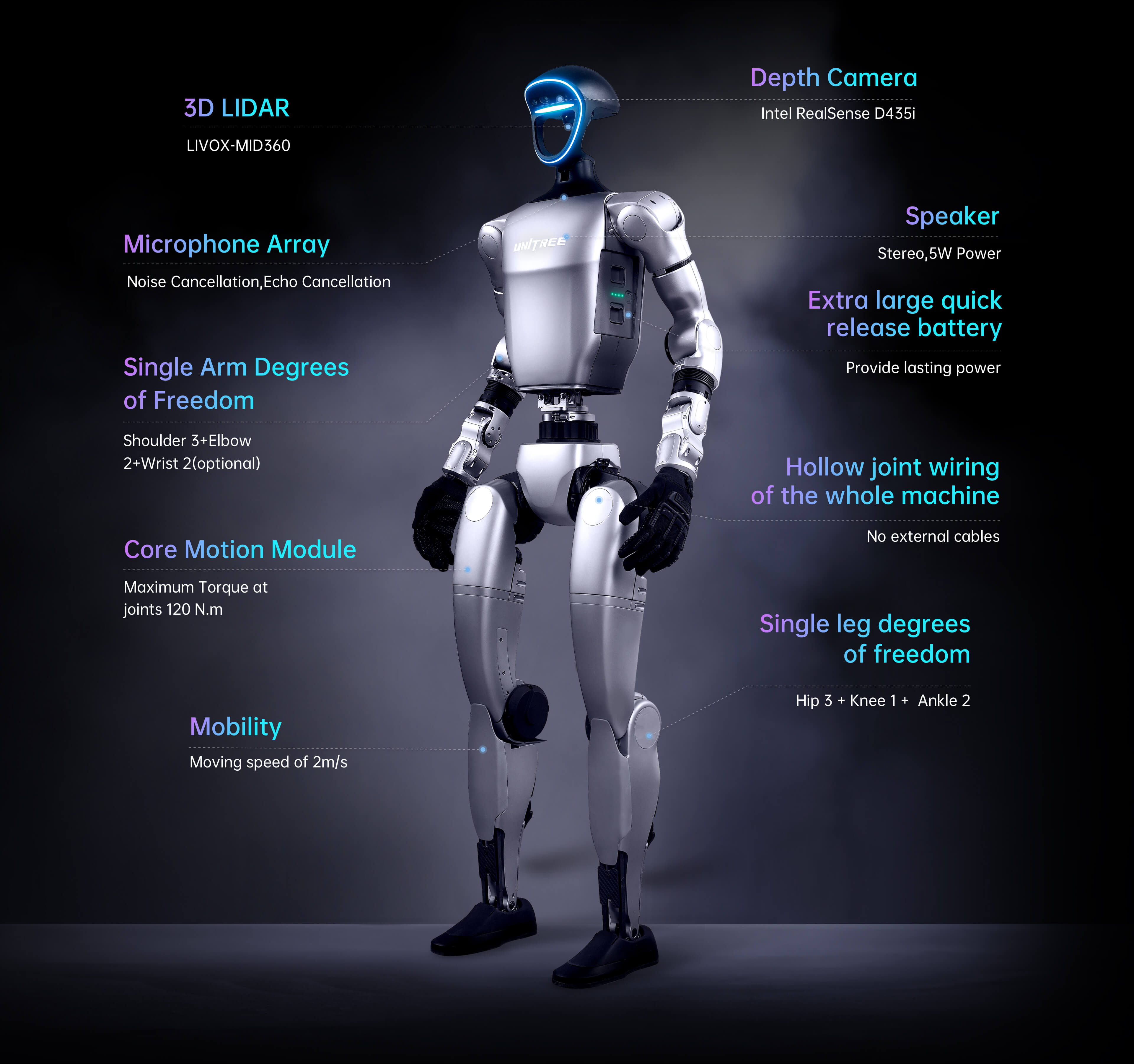By futureTEKnow | Editorial Team
China’s robotics scene is surging, and Unitree Robotics is now taking a bold next step: starting the process for its initial public offering (IPO). This move positions the Hangzhou-based developer of quadruped and humanoid robots as a potential game-changer, not just domestically but on the global tech stage.
IPO On the Horizon: On July 18, 2025, Unitree Robotics began the formal “tutoring” phase for a planned listing, working with CITIC Securities to shape its compliance and documentation. The IPO could arrive as early as Q1 2026, either in Hong Kong or on mainland China’s A-share market.
Big Backers, Big Ambitions: Key industry giants like Tencent, Alibaba, and Geely have invested, signaling wider confidence in Unitree’s tech and trajectory.
Valuation and Growth: Following a major Series C round in May 2025, Unitree’s valuation hit $2.95 billion. The broader Chinese robotics industry is now valued at over $108 billion and is expected to expand rapidly through 2028.
China’s government is all-in on robotics as part of larger modernization and economic plans. The 14th Five-Year Plan and the “Robot+” Action Plan prioritize tech research, cross-sector collaboration, and manufacturing upgrades. Key takeaways:
China accounts for over 51% of the world’s industrial robot installations.
Robot density: 470 robots per 10,000 workers, now ahead of both Germany and Japan.
Local governments in innovation hubs like Shenzhen and Beijing are providing tax breaks, R&D incentives, and pushing mass rollout targets—for example, Beijing wants 10,000 humanoid robots in production by 2027.
Unitree isn’t just another robot company. Its catalog ranges from affordable quadruped robots—think “robot dogs”—to sophisticated humanoid robots like the G1 (priced at just $16,000). Key features that set Unitree apart:
Cost-effective and modular designs make robotics more accessible to research labs, schools, and businesses worldwide.
Hardware-software integration positions Unitree to seize the growing interest in embodied AI and automation.

Strategic restructuring: Unitree’s recent shift to a joint-stock structure signals IPO-readiness and aligns with strategic national goals
Global Ambitions: While Unitree faces fierce competition from established giants (Boston Dynamics, for example), its focus on mass-market and research applications is giving it international visibility
Risks remain, though:
The robotics sector is highly competitive
Regulatory changes (especially in areas like data governance and foreign investment) could reshape the opportunity landscape.
Balancing high-tech innovation with cost control will be key to sustainable growth.
For tech watchers, Unitree’s impending IPO is more than a financial headline. It’s a window into China’s ambition to lead the next industrial revolution. With strong R&D, deep-pocketed investors, supportive government policy, and a rapidly growing market, Unitree is uniquely positioned—but faces no shortage of big tests up ahead.
The era of affordable humanoid robots is approaching fast, and China’s Unitree seems determined to run at the front of the pack.

Bridgit Mendler’s Northwood Space is pioneering mass-produced ground stations, enabling scalable, high-speed connectivity for the new era of satellite networks and megaconstellations.

SpaceX aims to nearly double launches from Vandenberg in 2025, facing support from federal agencies but strong objections from the state and local communities.

Traditional Medicare will pilot AI-assisted prior authorization in 2026 across six states, focusing on high-risk outpatient services. Clinicians retain final say, but incentives and access concerns loom as CMS tests fraud reduction and “gold card” exemptions. Here’s what providers and patients should know.

OpenArt’s new “one-click story” compresses scripting, visuals, and edits into ready-to-post short videos—fueling viral growth and a fresh IP debate. We break down how it works, adoption signals, what’s next (multi-character, mobile), and practical guardrails creators and brands should follow to stay original and compliant.

OpenAI’s o3 swept the Kaggle AI chess tournament, defeating xAI’s Grok 4–0. The victory fueled the intense rivalry between Altman and Musk, reshaping AI benchmarks.

NASA and Google’s AI-powered Crew Medical Officer Digital Assistant enables autonomous diagnoses for astronauts on Mars missions, redefining remote healthcare for space and Earth.

Pinterest’s CEO confirms that fully agentic AI shopping is years away, as the platform invests in AI-powered tools to enhance discovery, inspiration, and personalized shopping experiences for millions.

Shopify’s new AI shopping tools are transforming e-commerce, letting agents and chatbots deliver smooth, personalized shopping and checkout experiences across platforms. Learn how these innovations reshape online retail.

Meta has acquired WaveForms AI, a startup pioneering emotion-detecting voice technology. Learn what this means for Meta’s AI voice ambitions and the future of AI audio.

Tracelight is revolutionizing financial modelling for finance professionals with AI-powered Excel tools that automate complex tasks, reduce errors, and unlock new analysis capabilities. Learn how this next-gen solution changes the future of spreadsheets.

China’s Lanyue lander completed its first major test, showcasing advanced engineering for safe, crewed moon landings before 2030. Explore how this milestone shapes the space race.

Microsoft rolls out GPT-5 across its Copilot suite, integrating smarter AI for enterprise and personal users. Discover new features, free access, and what sets this launch apart.
To provide the best experiences, we use technologies like cookies to store and/or access device information. Consenting to these technologies will allow us to process data such as browsing behavior or unique IDs on this site. Thanks for visiting futureTEKnow.